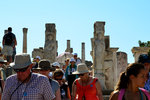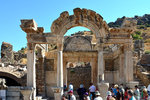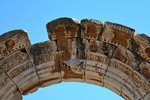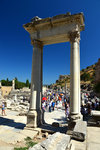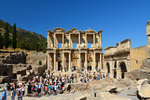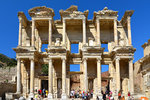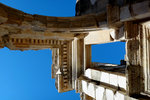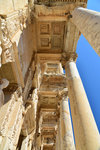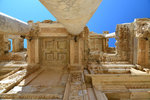|
|
|
|
|
The Hercules gate, they say it can bring you good luck if you touch both sides at once while you cross the gate... well unless you are an ape, I found it a bit difficult!
|
| Along the Curetes Street is the Trajan fountain. Built in 102-104 AD, it was consecrated to the Emperor Trajan. Only 1 foot now remains of his giant statue.
|
| Temple of Hadrian - Built to honour a visit by Hadrian in AD 123
|
| Medusa is engraved on the top of the temple of Hadrian
|
|
|
|
|
|
|
At the end of the Curetes Street is the Gate of Hadrian. In the Roman period when an emperor visited a city it was a tradition to construct a monumental building in his honour
|
| The famous Library of Celsius was Built in 117 A.D. It was a monumental tomb for Gaius Julius Celsus Polemaeanus, the governor of the province of Asia. Its capacity was more than 12k scrolls and was the 3rd largest library then
|
| The facade of the library has two-storeys, with Corinthian style columns on the ground floor and three entrances to the building.
|
| The columns of the upper storeys are smaller than those of the floor below. They carry triangular and semicircular pediments by turn
|
|
|
|
|
|
|
The ceiling of the lower storey
|
| View of the lower and upper storeys from the ground
|
| Relica of the original statues symbolize wisdom (Sophia), knowledge (Episteme), intelligence (Ennoia) and valor (Arete). This is Sophia
|
| |

